Natural Attractions to Visit Along the NC500 in Scotland
If you’re currently planning out your North Coast 500 (NC500) itinerary, then you’ve come to the right place. In this guide we’ll provide you with a list of our favourite natural attractions along the NC500 in Scotland.
These include waterfalls, gorges, caves, beaches, rock formations and, of course, some mountain peaks to hike. Basically everything Mother Nature created for us!
Of course there’s way more to see and do along the NC500, so at the end of the guide we’ve also added links to additional resources that will help you plan what is possibly the best road trip in the United Kingdom.
Disclosure: This post may contain affiliate links, which means we may receive a small commission if you click a link and purchase something. Clicking these links won’t cost you anything, but it will help us to keep this site up and running! Learn more about our affiliate policy.
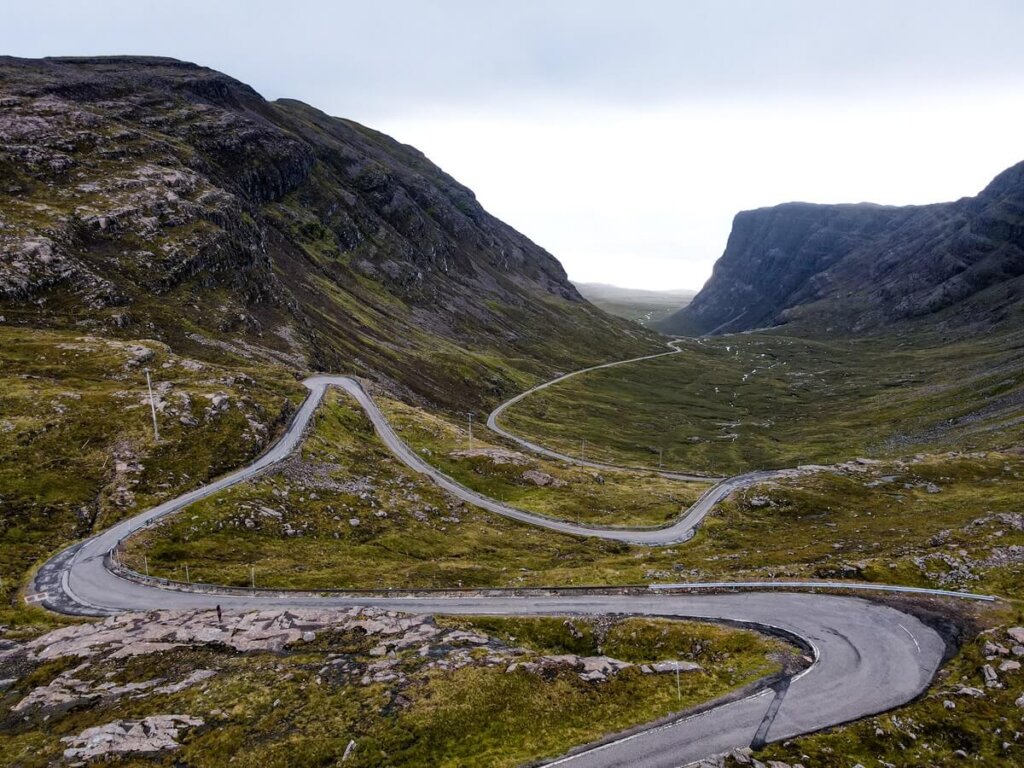
What is the North Coast 500, aka the NC500?
The NC500 is a 516-mile-long route around Scotland’s northernmost region. Although the road connecting the towns and cities along this route isn’t new, the official NC500 was only launched in 2014. Since then it has increased in popularity, so much so that locals have very mixed feelings about the number of tourists driving this route, especially during the summer.
The route passes through six regions of the Scottish Highlands: Inverness-shire, Wester Ross, Easter Ross, Sutherland, Caithness, and the Black Isle.
The scenic NC500 starts and finishes in Inverness, the capital of the Scottish Highlands. From Inverness you can either drive north-east first towards Wick and John o’ Groats or, alternatively, you can also drive west towards Shieldaig and then north towards Ullapool.
A minimum of 5 days is required to drive the NC500. However, we think that you should plan for at least 7 days to have a more enjoyable experience.
You can complete the NC500 in all types of vehicles including your average car, electric car, sports car, vintage car, campervan, motorbike, or even on a bicycle.
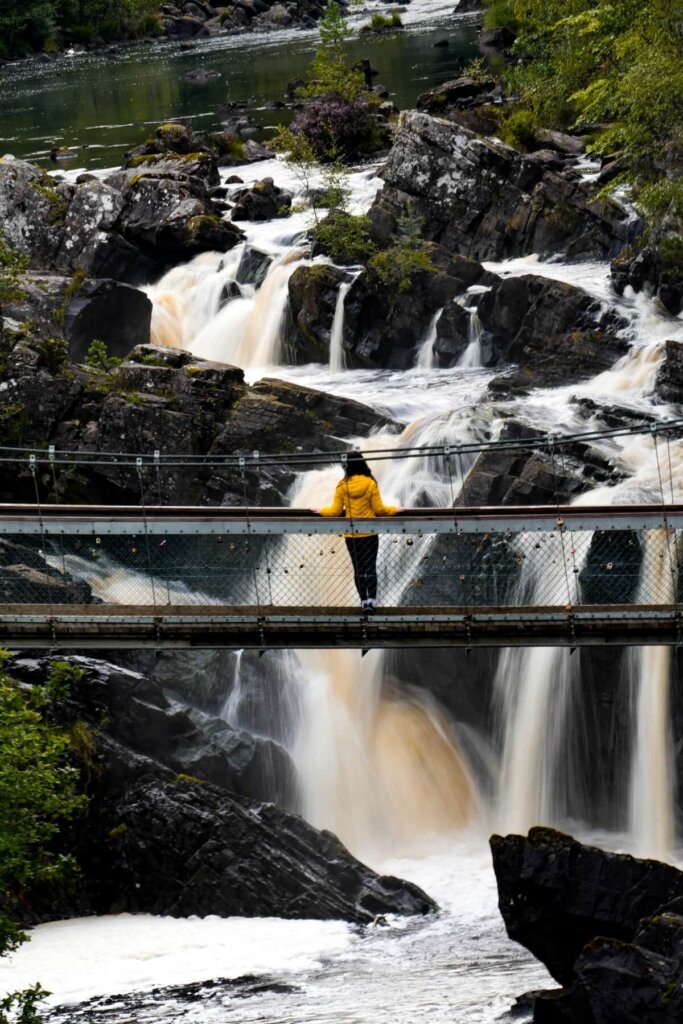
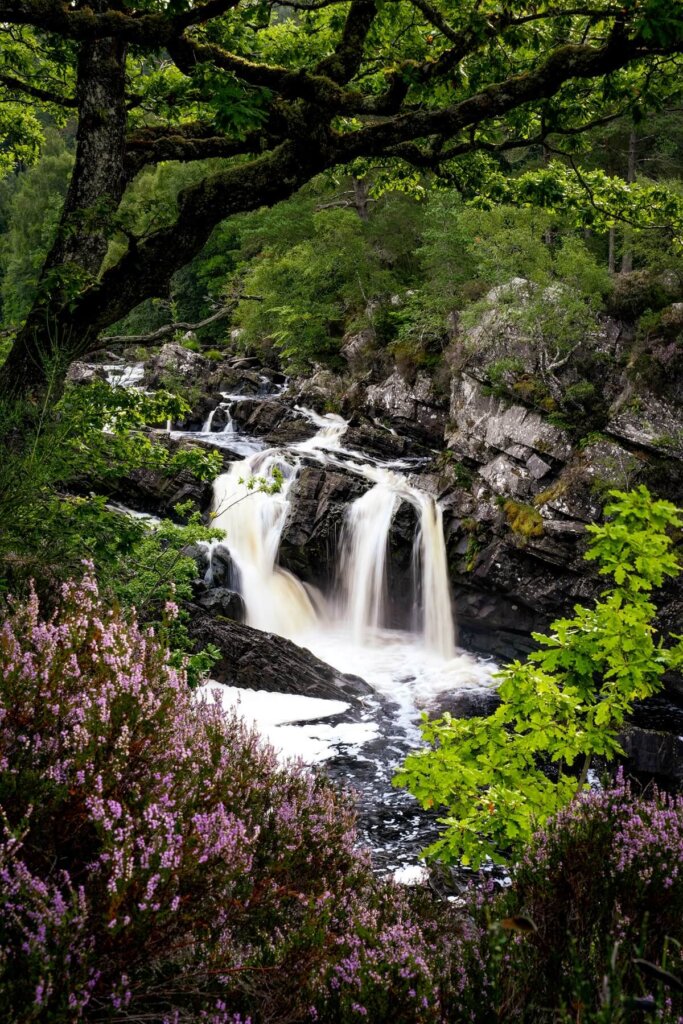
Natural Attractions to Visit Along the NC500 in Scotland
Below you’ll find some of our favourite natural attractions that we managed to visit during our drive along the North Coast 500. Of course, there are way more than we can cover on this list, and we probably would’ve stopped at a few more if the weather had been slightly better, but this is a great place to start your planning process.
We’ve listed these attractions in a clockwise direction, which is the way we decided to drive the epic NC500 route.
Rogie Falls
Rogie Falls was the first natural attraction we stopped at along the NC500. This lovely waterfall is located in the Ross-shire county, only a short drive outside of Inverness, and about 2 miles (3 km) northwest of Contin.
There are two short trails you can complete around the falls. One is the 0.5 mile (0.7 km) Salmon Trail and the other one is the 0.75 mile (1.3 km) Riverside Trail. Regardless of which trail you pick, you should walk out to the suspension bridge across the Black Water river to get a closer look at Rogie Falls.
If you’re visiting between July and September, you’ll probably be able to spot some salmon swimming upstream.
Directions and Parking. Follow the A9 out of Inverness, then turn onto the A835 and follow this road until your reach Rogie Falls Parking.
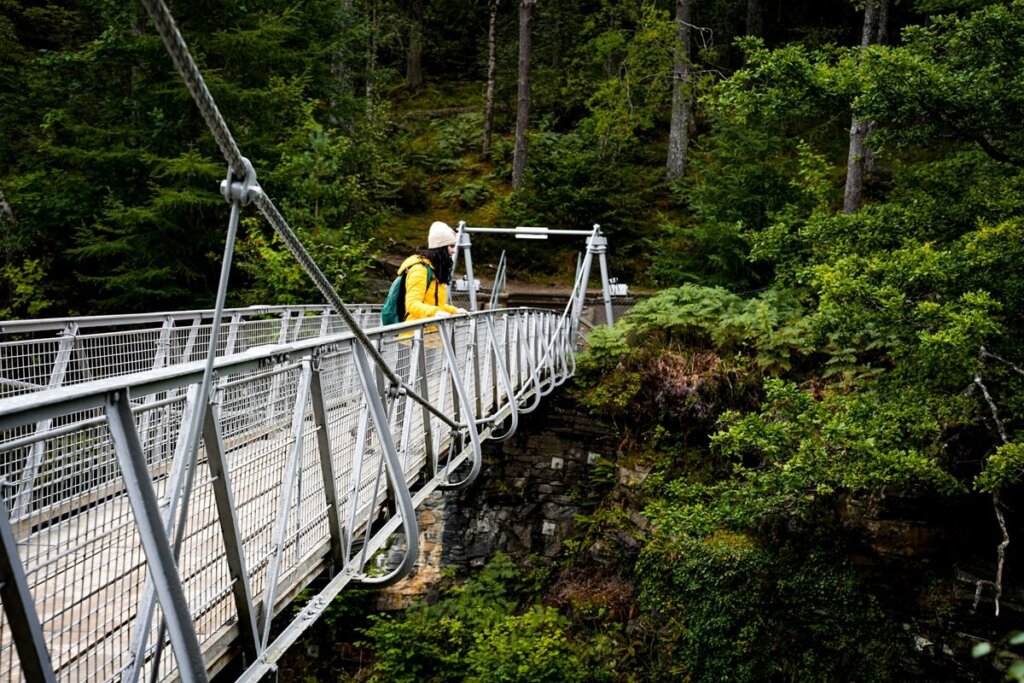

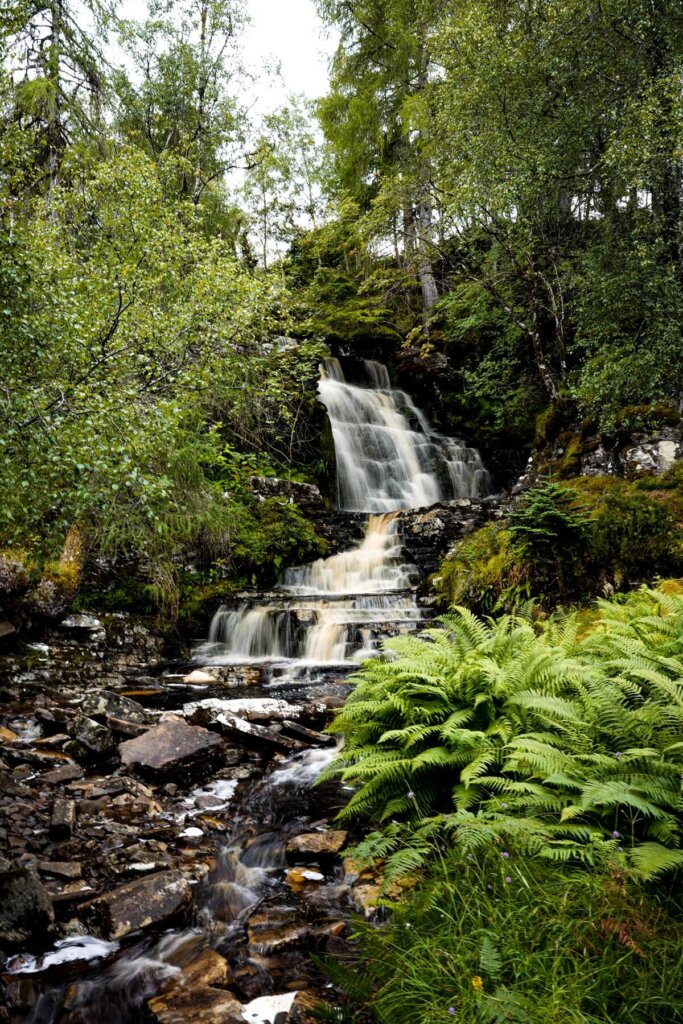
Corrieshalloch Gorge Nature Reserve
A natural attraction that should definitely be on your NC500 itinerary is Corrieshalloch Gorge Nature Reserve. It’s located between Garve and Ullapool and is home to a 60 m deep gorge as well as a 46 m single-drop cascade called the Falls of Measach.
From the visitor centre we followed the 1km long Woodland Walk that took us to the Sir John Fowler’s Bridge. If we had felt like it, we could also have completed the slightly longer (1.4 km) Lady Fowler’s Fern Walk.
We crossed the suspension bridge from where we could really appreciate the depth of the gorge and the power of the Falls of Measach plummeting down into it. However, to see the entire waterfall we walked further down through the woodland to the viewpoint. Seeing the waterfall and the gorge together from here was an incredible sight.
Directions and Parking. Corrieshalloch Gorge is located at the junction of the A832 and the A835 south of Ullapool. There’s a car park and visitor centre located next to the A832. The site is free to enter but you need to pay for parking.
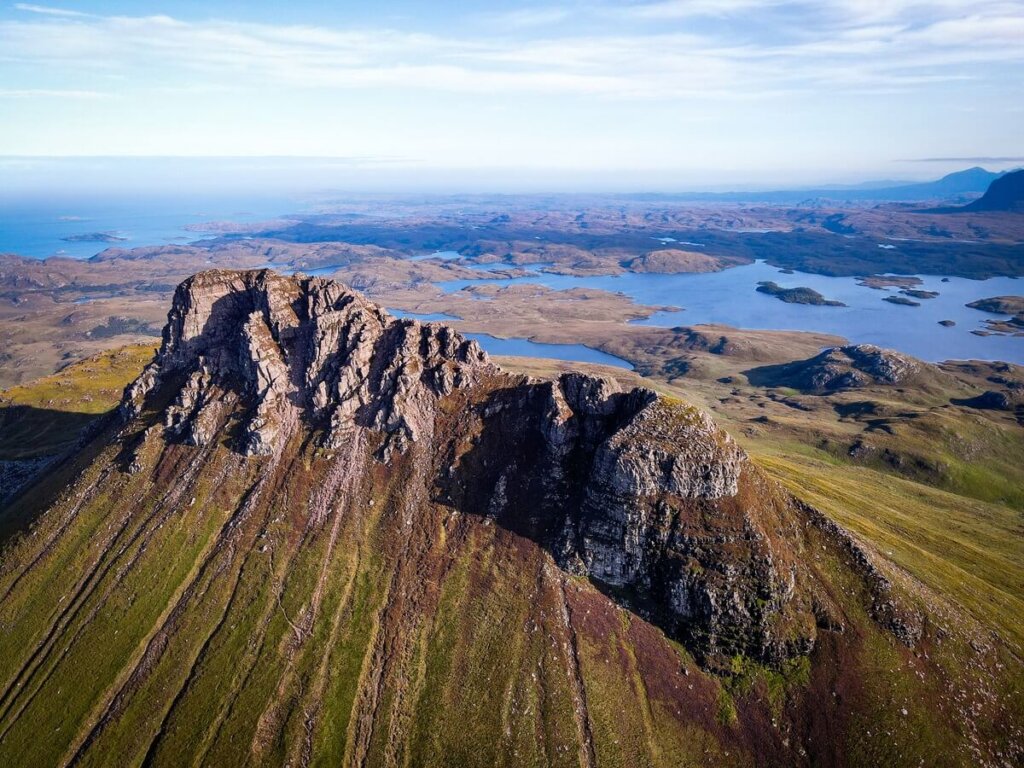
Stac Pollaidh
The Scottish Highlands are a hikers’ paradise, filled with many challenging and easier walks to mountain summits. Luckily, Stac Pollaidh is a more beginner friendly mountain to climb that still offers hiker’s fantastic views across the surrounding area.
The trailhead for this 2.5 mile (4 km) long loop is located next to a narrow single road north of Ullapool and west of Drumrunie. Whilst Stac Pollaidh isn’t located along the official NC500 route, it’s definitely worth the slight detour to stretch your legs and admire the panoramic vistas.
We’ve written a dedicated hiking guide where we share everything you need to know before climbing Stac Pollaidh, including where to park, when the best time to hike is, what to bring and what to wear, as well as a short trail description with a route map.
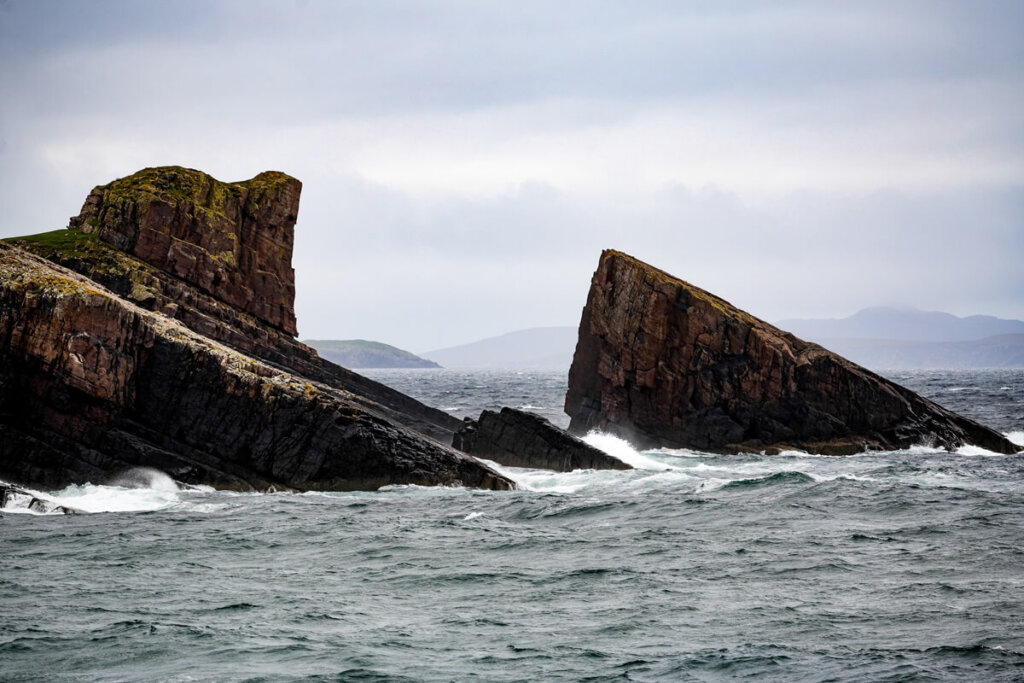
Split Rock at Clachtoll Beach
Another natural attraction that’s well worth visiting along the NC500 is Split Rock. It’s located near Clachtoll Beach, which is one of the best white sandy beaches in Scotland. Split Rock is a unique geological formation where you’ll see a huge gap between the sandstone rocks. If the weather conditions are ideal, then we recommend spending some time on this beautiful beach admiring the rugged landscape surrounding these turquoise blue waters.
Directions and parking. Split Rock is located at Clachtoll Beach just off the B869 south of Clachtoll. Parking is available here.

Drumbeg Viewpoint
A quick stop to add to your NC500 itinerary is Drumbeg Viewpoint. It’s located along the B869, the beautiful Assynt coastal road. On a clear day, you’ll be rewarded with some stunning vistas of the Scottish Highlands. It’s also a great place to stop and stretch your legs for a bit.
Parking. There’s a few car parking spaces available at the viewpoint.
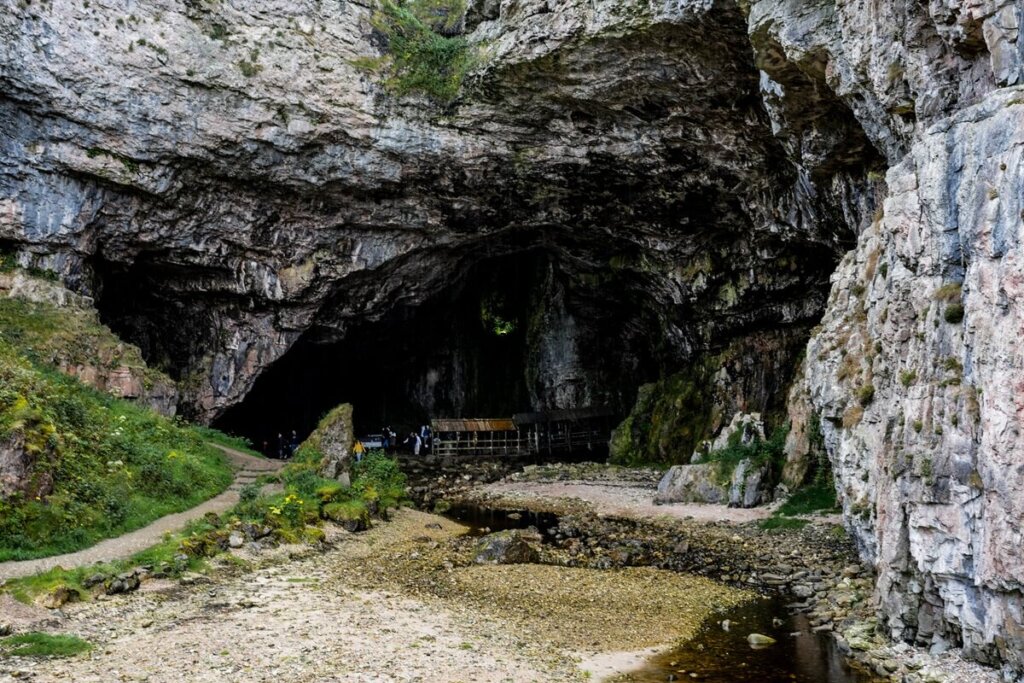
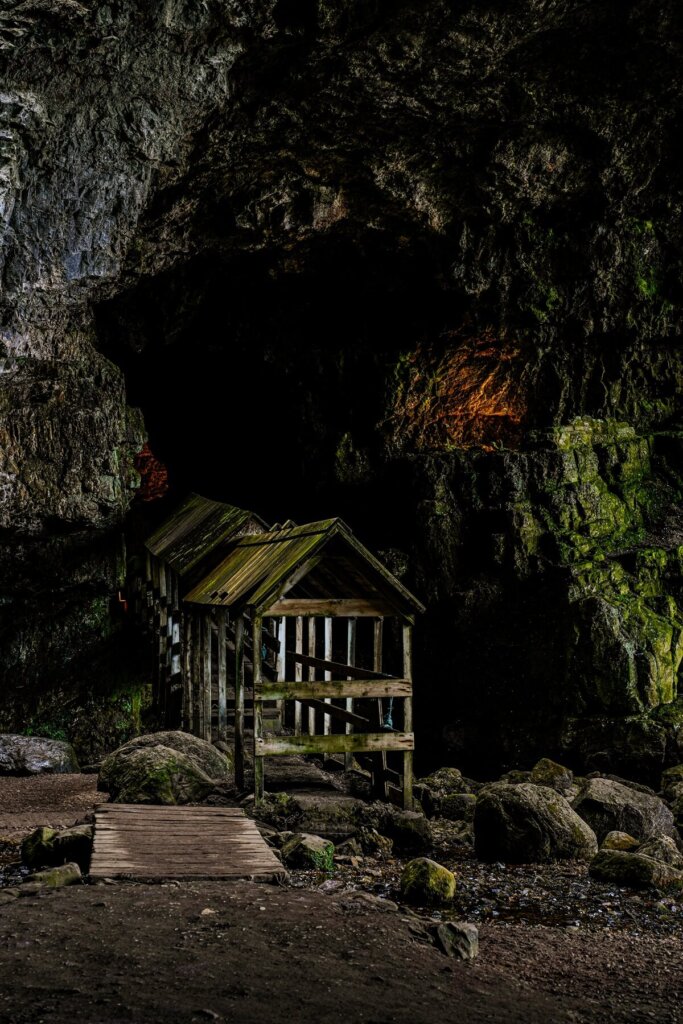

Smoo Cave
This incredible limestone sea cave is located to the east of Durness. Smoo Cave has a 50ft high entrance which makes it one of the largest entrances to any sea cave in the UK. It’s an active cave that’s fed by the Allt Smoo. An added bonus is that you can walk into the waterfall chamber for free, which is what we did, although we didn’t actually see the waterfall. However, you can also take a tour, but note that due to weather conditions they can get cancelled. And we all know that the weather in the Highlands is extremely unpredictable!
Directions and Parking. The cave is located just off the A838 a few miles to the east of Durness. Parking is available at this car park.

Loch Eriboll and Ard Neackie Lime Kilns
One of our absolute favourite viewpoints along the NC500 was looking out over the Ard Neackie Lime Kilns at Loch Eriboll. This sea loch is about 10 mile long and 1 mile wide, with Ard Neackie located on the east shore. Ard Neackie is connected to the land by sand and shingle. There are four lime kilns here, built in 1870 to produce lime. From the viewpoint it looks like a small whales tail, similar to the one at Uvita Beach in Costa Rica.
Parking. For the best view, park in this lay-by along the A838.
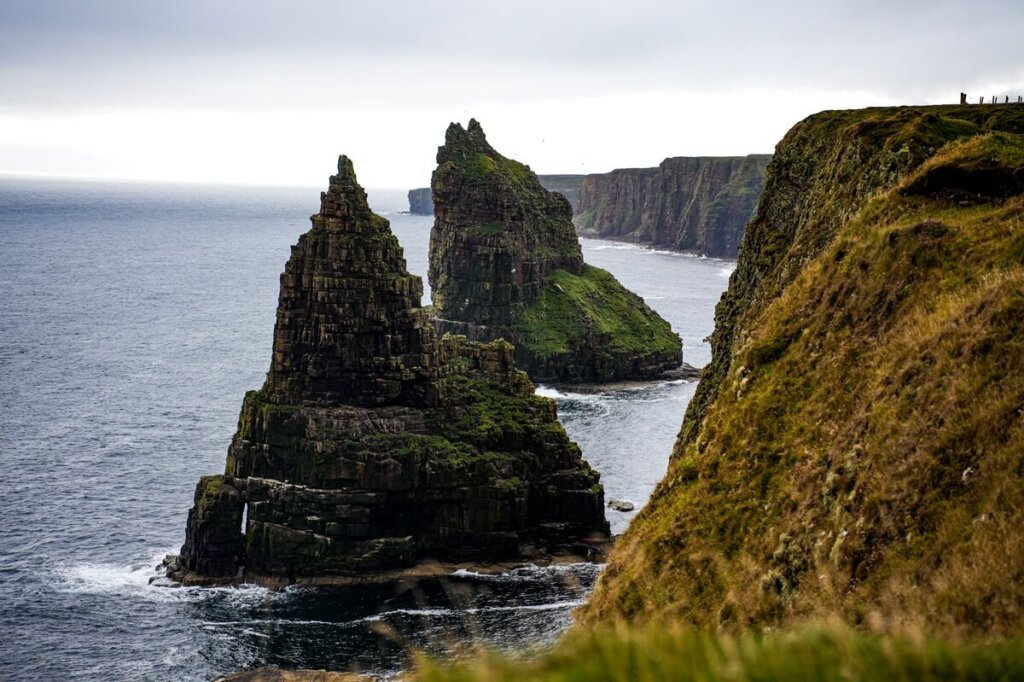
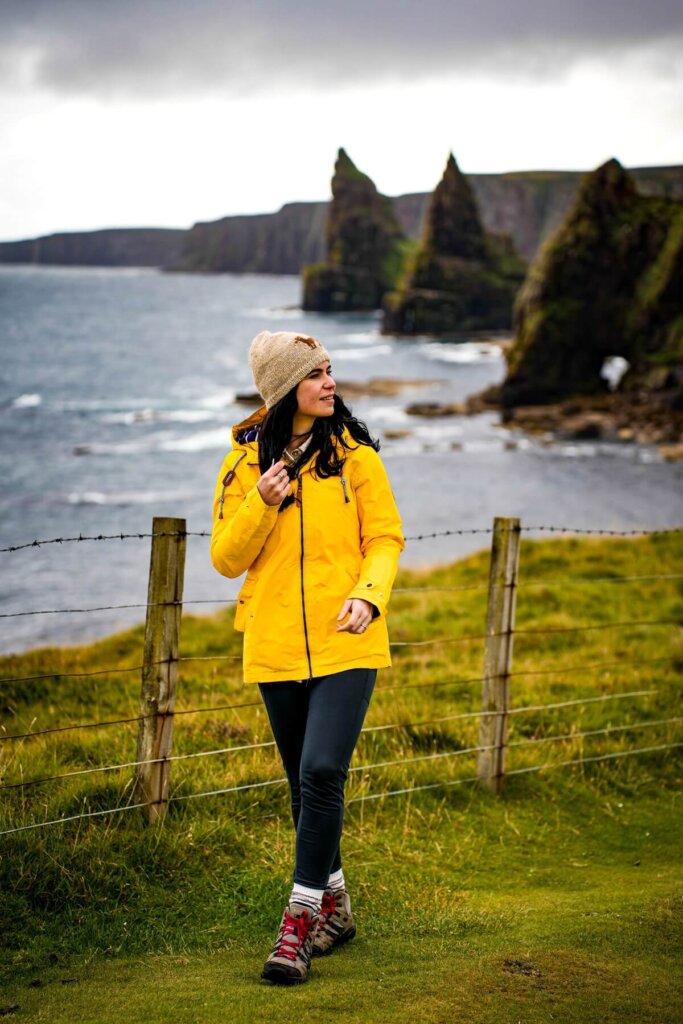
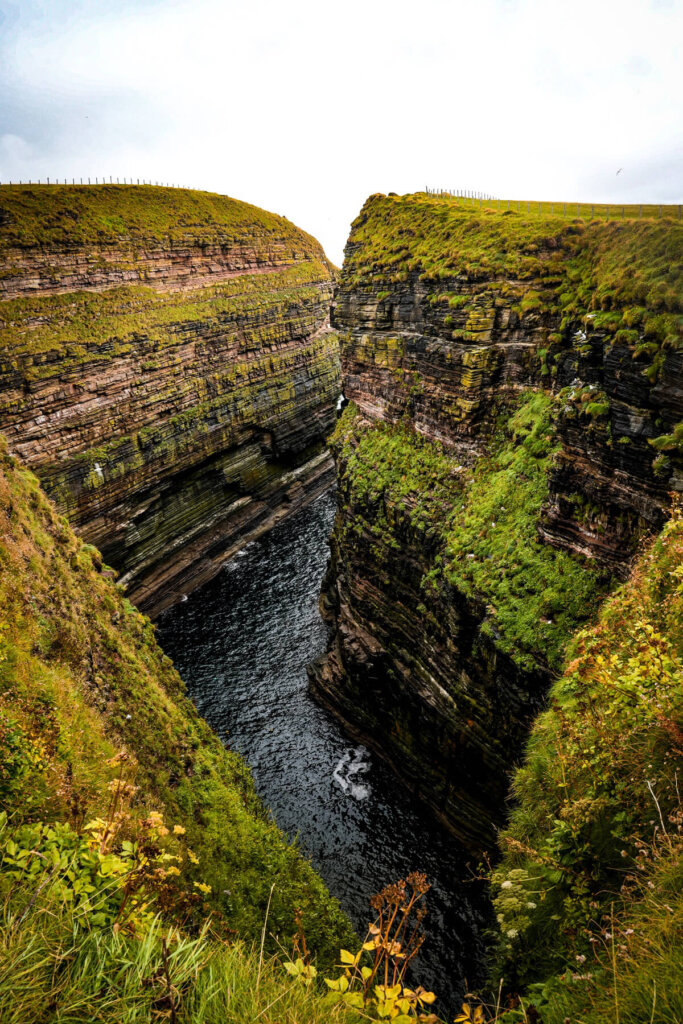
Duncansby Head and Duncansby Stacks
Two natural attractions that should 100% be on your NC500 itinerary are Duncansby Head and Duncansby Stacks. If you’ve driven all the way to the most northeasterly point of mainland Britain and only taken a photo with the John O’ Groats sign, then you haven’t actually made it to the most northeasterly point. This is because Duncansby Head is the actual most northeasterly point.
These impressive sea stacks were formed over time by tidal erosion. Today, they afford us some incredible views along with the wild sea and rugged coast line. Apart from the rock formations, you can also do some wildlife spotting here.
Directions and Parking. If you want to spend longer out and about then we suggest parking at John o’ Groats Car and Coach Park. From here, you can go on a hike along Duncansby Head, stop at the Duncansby Head Lighthouse and then carry on down to the Stacks. In case you’re short on time, or don’t want to walk that much, then drive to Duncansby Head Lighthouse Car Park and start your walk from there.
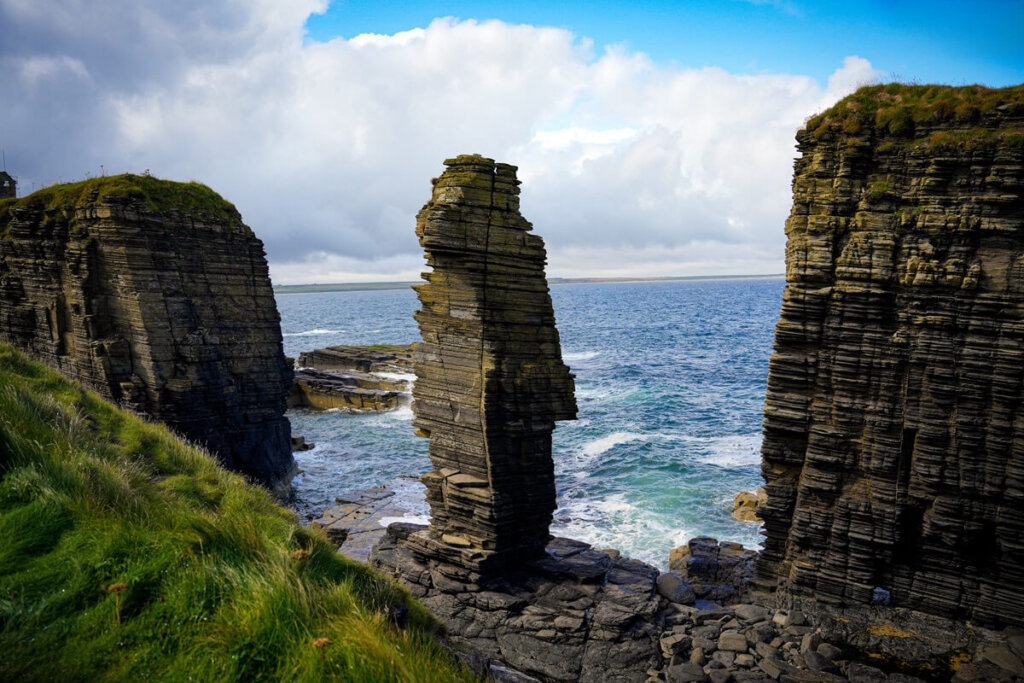
Sinclair’s Bay at Noss Head
Whilst Castle Sinclair Girnigoe is one of the best castle ruins to visit along the NC500, the coastline around it is also worth stopping for. We initially stopped at Sinclair’s Bay at Noss Head to see the castle ruins, which were absolutely beautiful, but we definitely didn’t expect to find such unique sea stack formations along the coast as well.
Directions and Parking. From Wick follow the Broadhaven Road to Staxigoe then the small roads towards Noss Head. Parking is available at Noss Head Car Park.
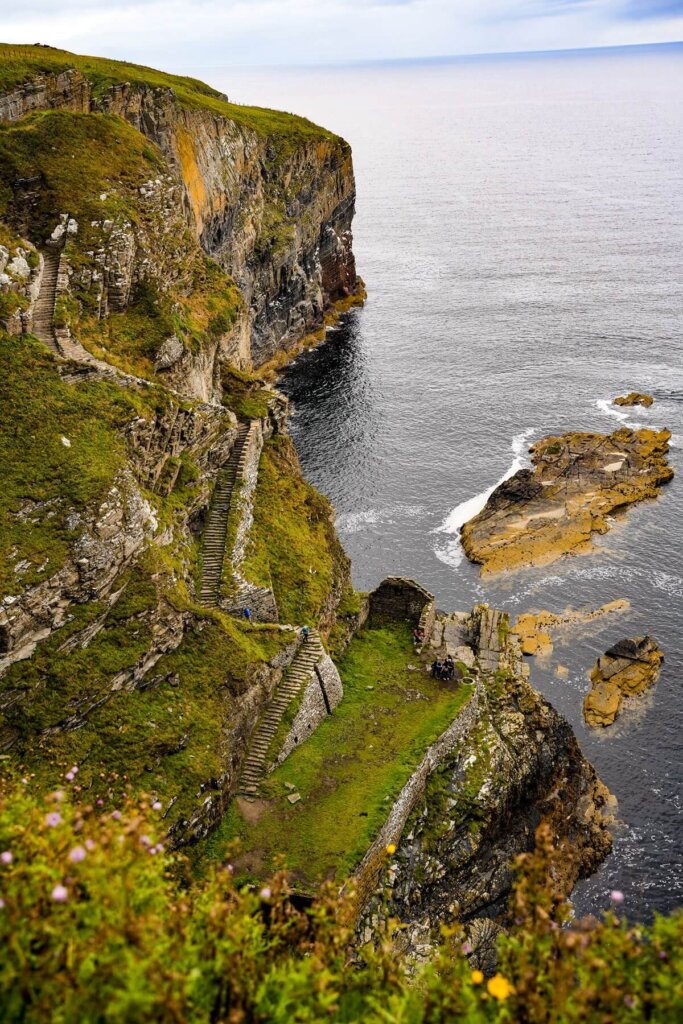
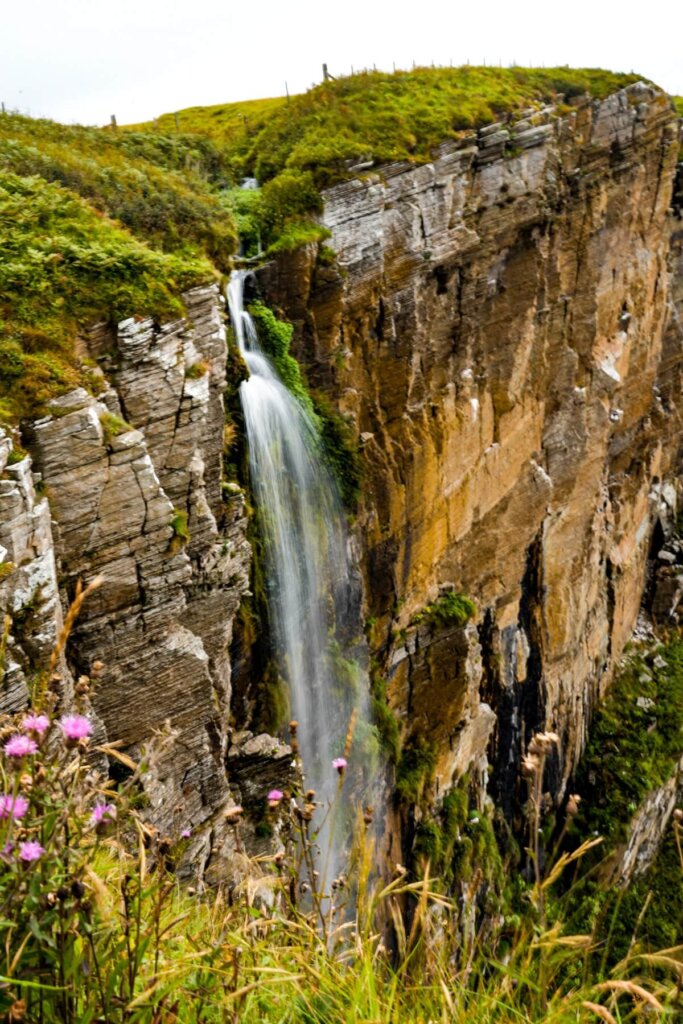
Whaligoe Haven and Whaligoe Steps
Although the Whaligoe Steps are a man-made staircase, they lead down to a lovely natural harbour called Whaligoe Haven. It’s surrounded by sheer cliffs on both sides and a hidden waterfall that cascades into the sea. You’ll have to descend about 330 steps to reach the harbour, but it’s totally worth the effort.
Directions and Parking. Whaligoe Steps are located in Whaligoe just off the A99. Limited parking is available at Whaligoe Steps Car Park.
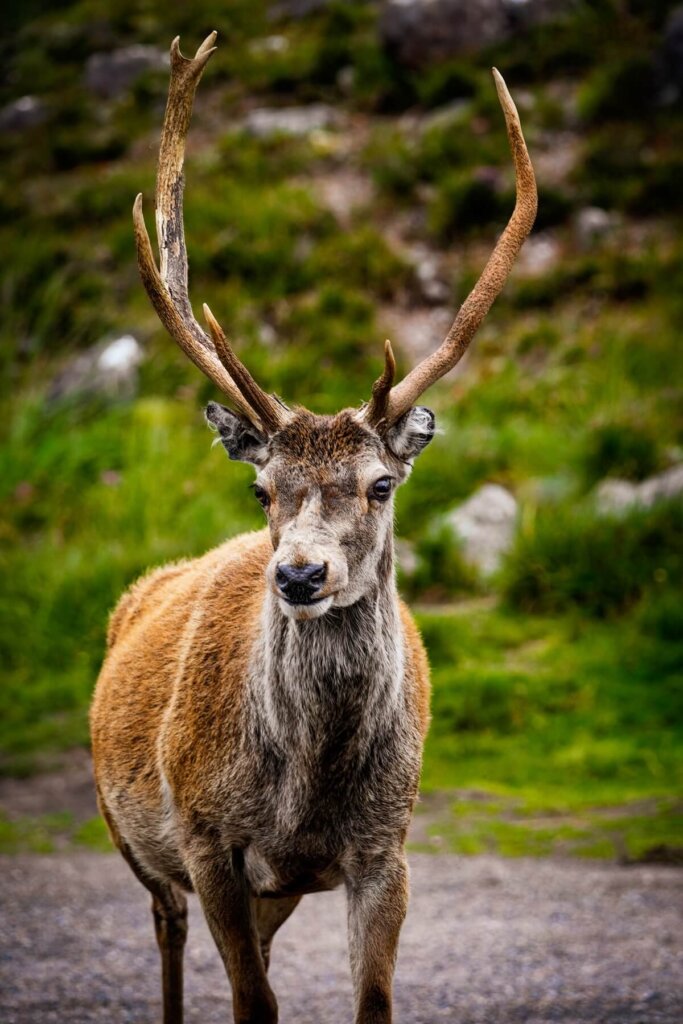
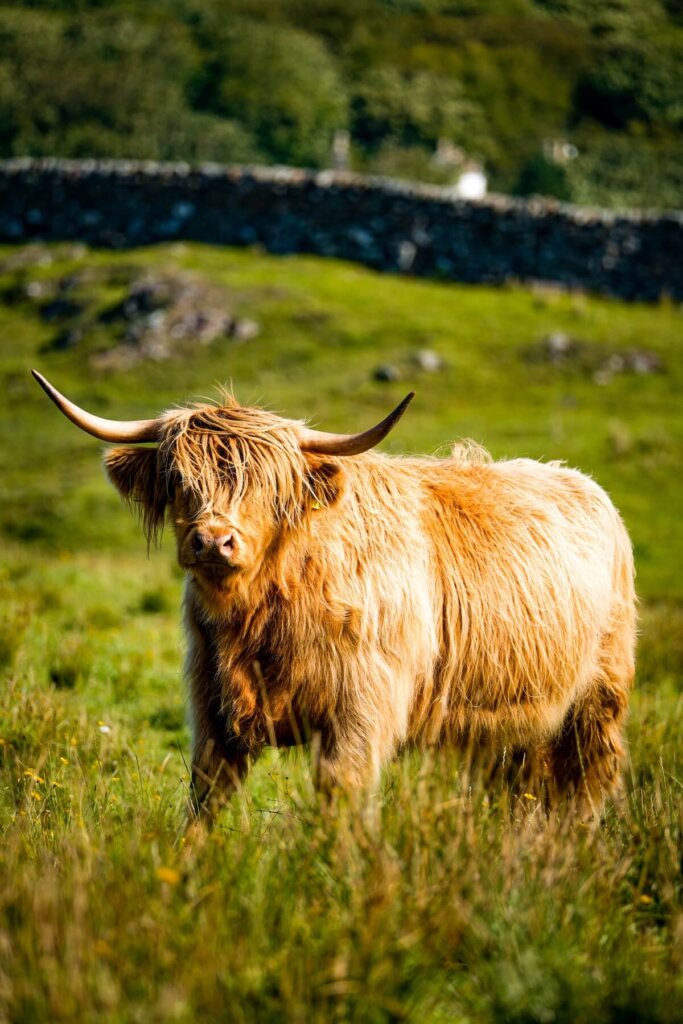
Wildlife Spotting Along the NC500
Driving the NC500 doesn’t just offer you impressive waterfalls, rock formations and sandy beaches. There’s also plenty of wildlife to see during your journey. Below we’ve listed a few places where you can spot Highland ‘Coos’, deer, puffins, seals, dolphins and even orcas.
- Robertson’s Farm Shop, north of Beauly (Highland Coos)
- Kirkton Farm, south of Melvich (Highland Coos)
- Bealach Na Bà Pass / Applecross Peninsula (Highland Coos)
- Torridon Deer Museum (Red Deer)
- Chanonry Point, near Inverness (Dolphins)
- Handa Island (Puffins and other birds)
- Dunnet Head (Puffins, and other birds)
- Rogie Falls (Salmon leaping)
- Strathy Point Lighthouse (Dolphins, whales)
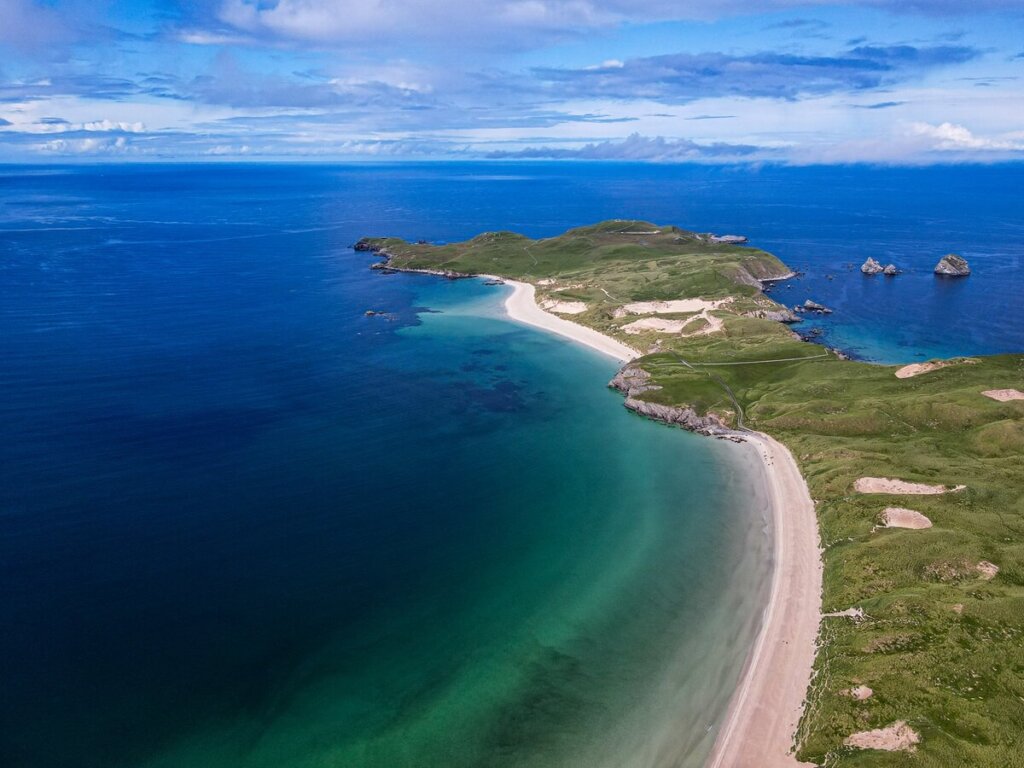
Sandy Beaches of the NC500
Turquoise blue water and white sandy beaches probably aren’t the first things that come to mind when someone mentions the Scottish Highlands. However, Scotland is home to countless stunning beaches that could easily be mistaken for the Caribbean. Well, apart from the temperatures of course.
We’ve written a separate blog post with a list of some of the best beaches to add to your own NC500 itinerary. We’ll quickly list our top 5 picks from that article below:
- Mellon Udrigle Beach
- Achmelvich Bay
- Clachtoll Beach
- Scourie Beach
- Balnakeil Beach
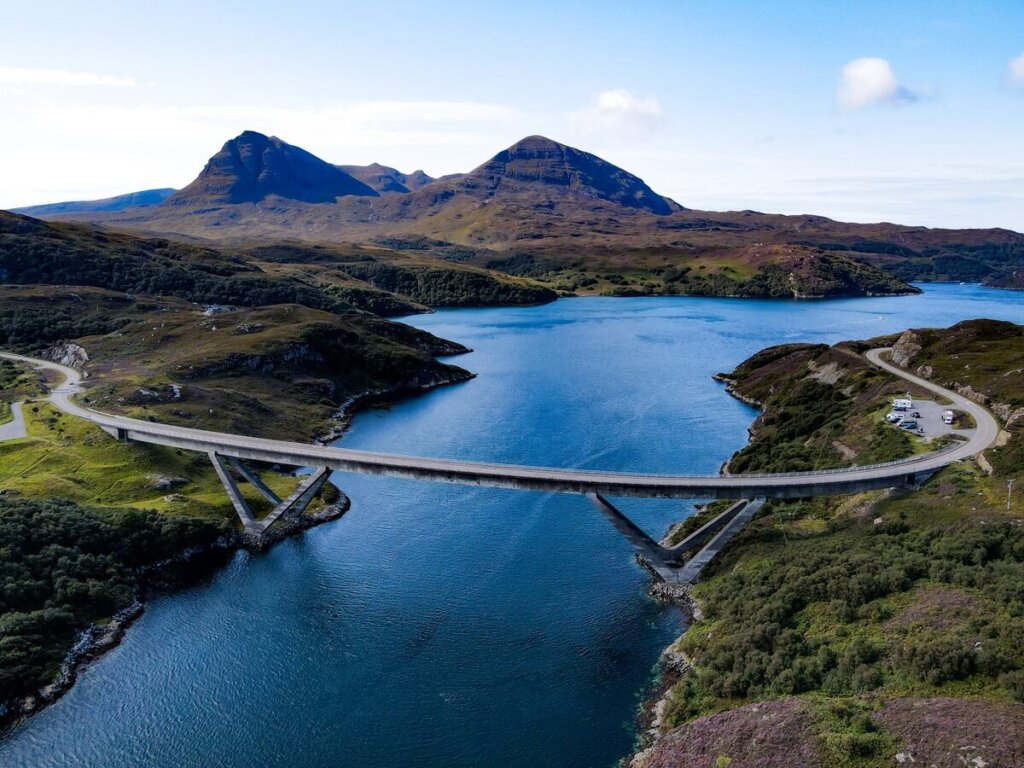
Additional NC500 Resources
The NC500 isn’t just about beaches and natural attractions though. Below we’ve linked some of our other useful resources, from city guides to beginner’s guides and driving tips, as well as some official websites you should use when planning your own NC500 route.

Final Thoughts on Natural Attractions Along the NC500 in Scotland
From our previous visits to Scotland, we knew that the NC500 would have some beautiful places that Mother Nature had created over time. Even with that knowledge and research in hand, we were still blown away by the raw natural beauty of the NC500. It’s safe to say that we fell even more in love with the Scottish Highlands after our road trip.
Have you ever driven the NC500 before? If so, which natural attractions did you stop at and what were your favourites? If not, which ones from our list would you add to your itinerary? Let us know in the comments below.

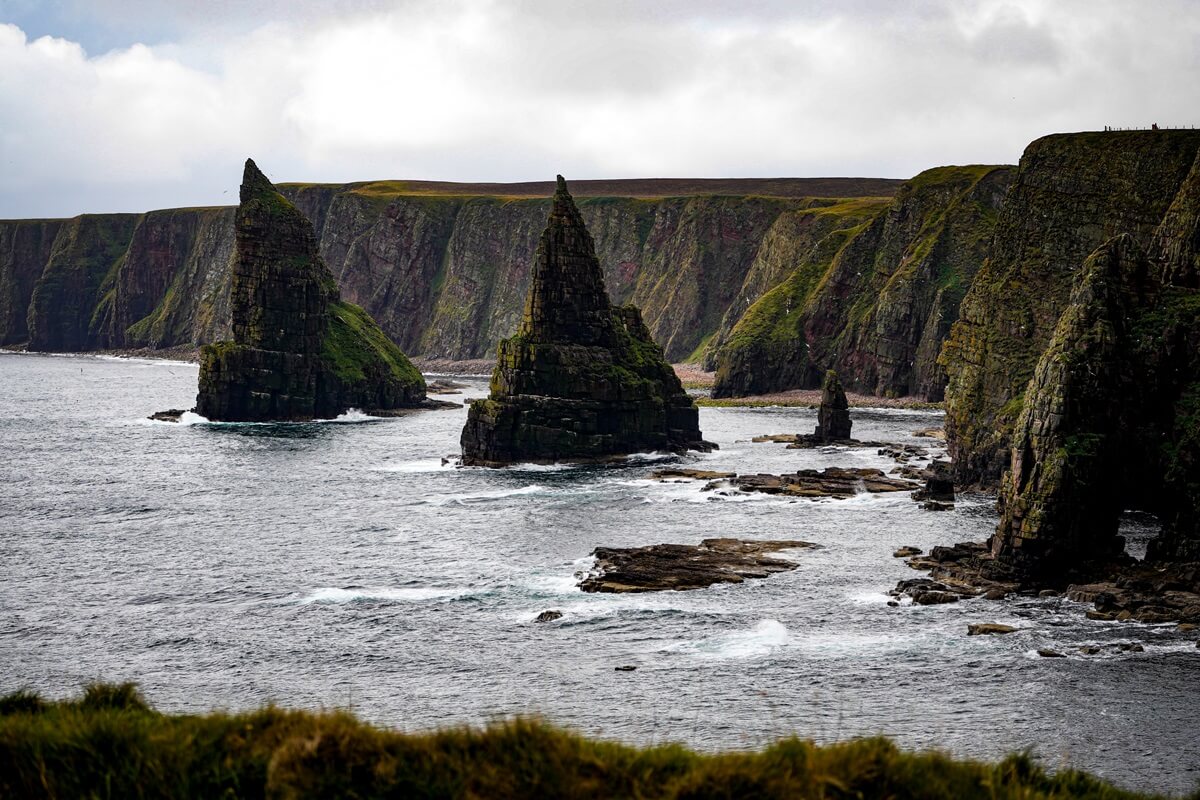

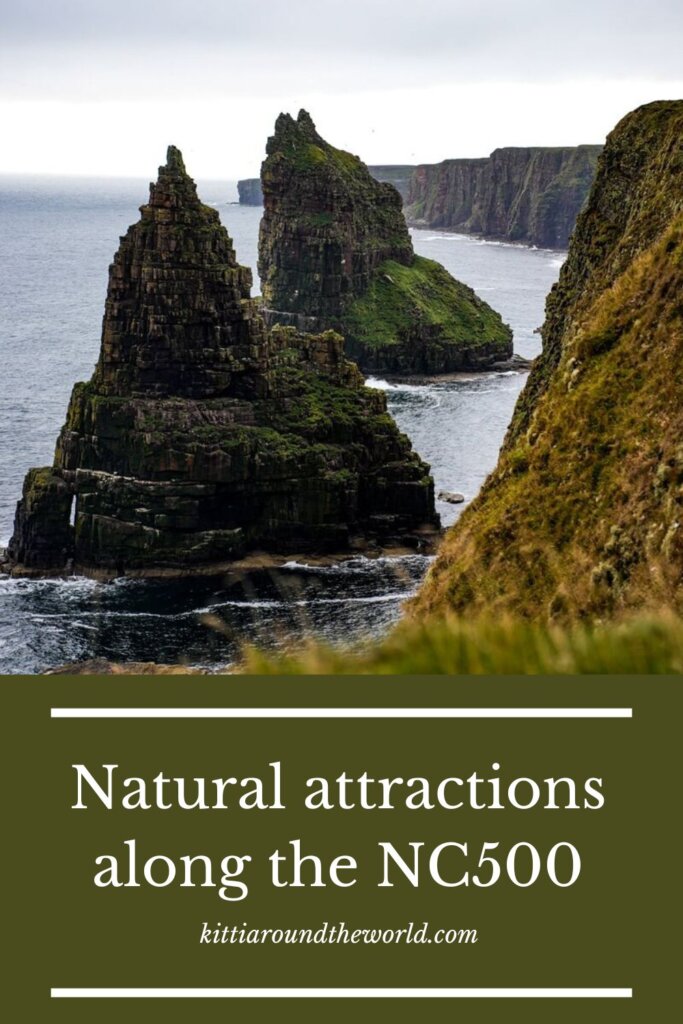
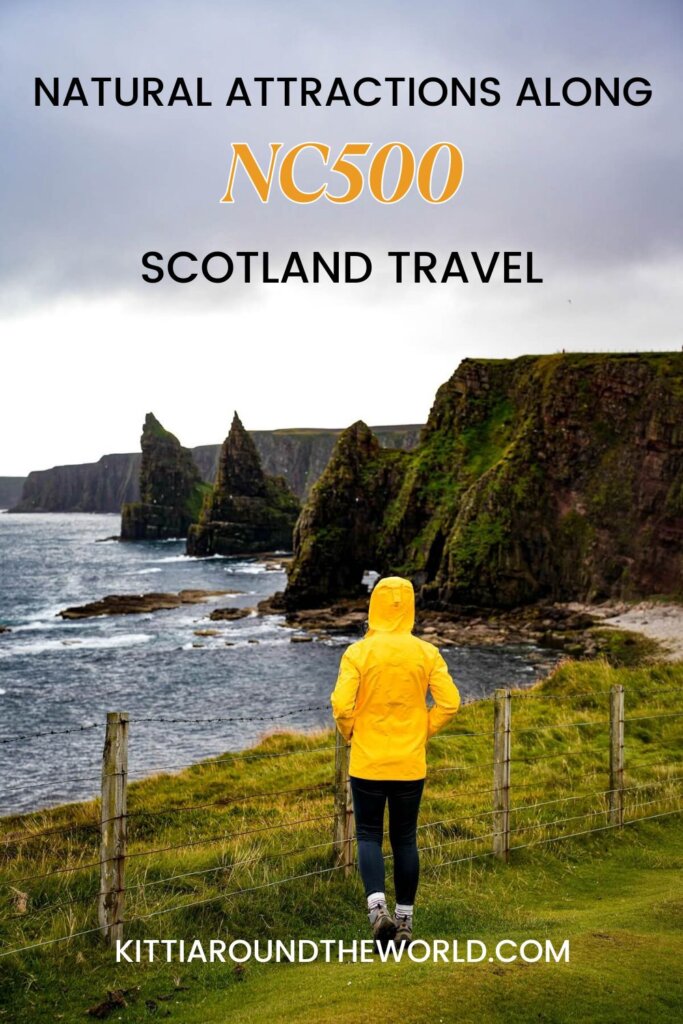
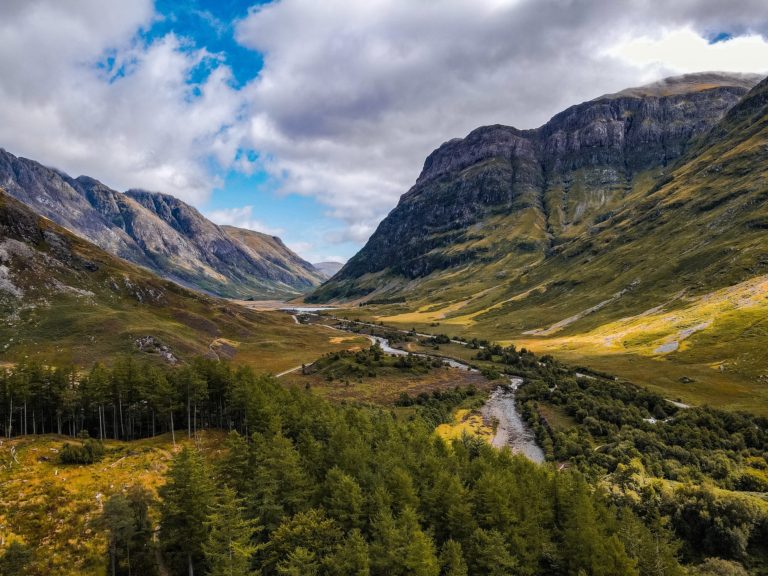
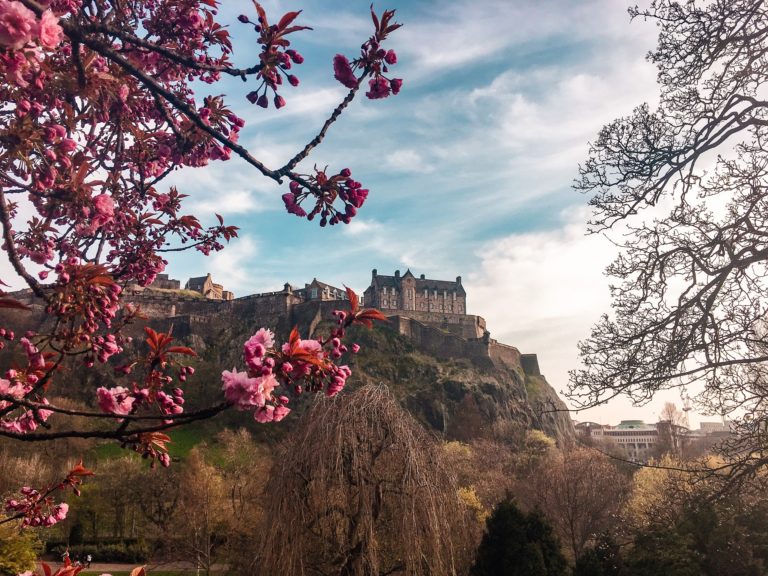
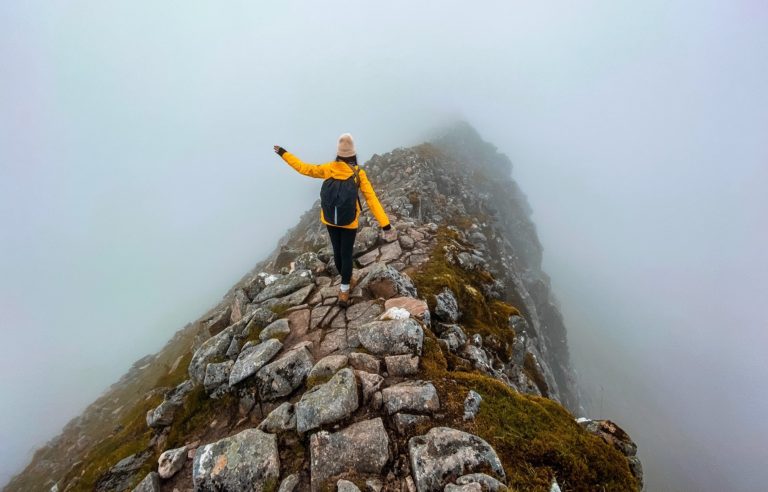
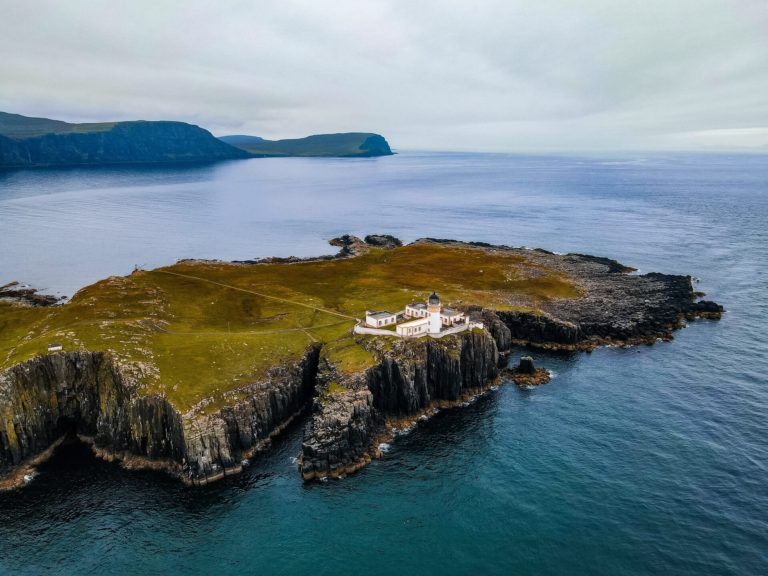
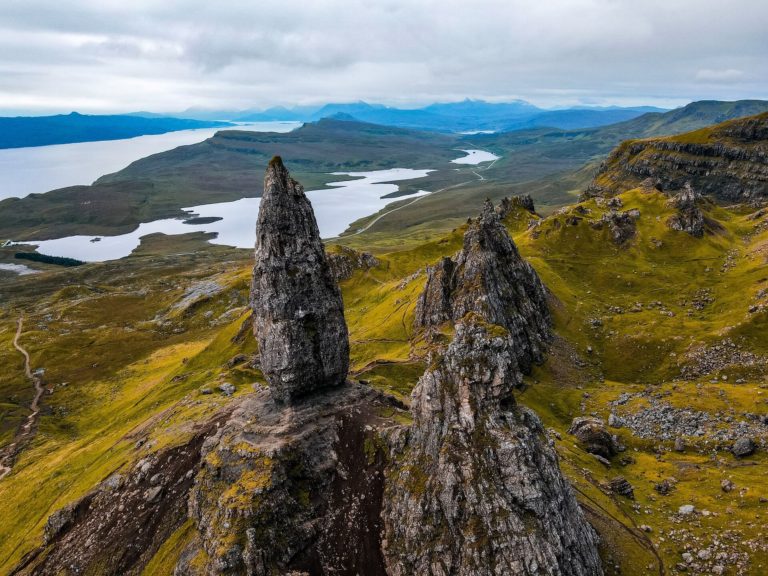

You packed a lot in on this trip! Such a beautiful part of the world. 🙂
Oh yes! We could’ve easily stopped at many more locations. The Scottish Highlands is absolutely breath-taking.